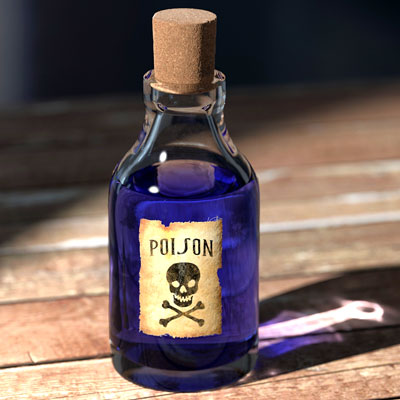
In 2017, the U.S Centers for Disease Control and Prevention (CDC) published an update to their 2009 report based on a study of more than 10,000 Americans who underwent biomonitoring, where their blood and urine was tested in an attempt to determine their ‘chemical body burden’. The results were astounding: even those who lived in remote areas were found to have hundreds of synthetic chemicals in their bloodstream.1
If that wasn’t bad enough, this chemical exposure begins even before we take our first breath— an astounding 287 chemical toxins have been detected within the umbilical cord blood of newborns.2
So how do these harmful synthetic chemicals get into our (and our children’s) bloodstream, and where do they come from? If you’re researching natural skincare options, you are probably aware of the issue, so you might not be surprised to hear that some of the toxic chemicals detected in the bodies of those tested are common ingredients in mainstream personal care products.
When I started my mission to detox my body and home, I was astonished to learn that according to the Environmental Working Group, women use an average of 12 products a day, containing 168 different chemicals. Men use fewer products, but still put 85 chemicals on their bodies. Teens on average use 17 personal care products a day, according to the group, which tested 20 teens' blood and urine in 2008 to find out which chemicals from these products were ending up in their bodies. They said they found 16 hormone-altering chemicals, including parabens and phthalates.3
What you put on your body is just as important as what you put in your body. Your skin is the largest organ of your body and since it is porous, what we use on our skin ends up inside our bodies, whether that be moisturisers, sunscreen, or even heavily chlorinated water.
So it is important to pay close attention to the ingredients in our skin care products. The majority of mainstream body care products contain a cocktail of carcinogenic chemicals, allergens, and irritants.
The top 4 ingredients to avoid
- Phthalates
Phthalates are plasticizing chemicals that are probable human reproductive or developmental toxins and endocrine disruptors. The two phthalates that are often used in cosmetics are dibutyl and diethylhexyl. Unfortunately, phthalates are commonly hidden on ingredient labels under the term “fragrance.”
In the past few years, researchers have linked phthalates to asthma, attention-deficit hyperactivity disorder, breast cancer, obesity and type II diabetes, low IQ, neurodevelopmental issues, behavioural issues, autism spectrum disorders, altered reproductive development and male fertility issues.
- Fragrance/Parfum
95% of artificial fragrances are derived from petrochemicals. These chemicals are capable of causing cancer, birth defects, nervous-system disorders and allergies. These artificial fragrances legally can be named “fragrance” and this one word can be hiding literally thousands of chemicals, including phthalates- all being absorbed, inhaled and digested daily.
What you want to be looking for is fragrance that is derived from essential oils. This means it’s distilled or steamed directly from plants.
- Parabens
Parabens are preservatives found in many skincare products. You can spot them easily on the product label because they end with the word paraben. Look out for methylparaben, proplyparaben, isopropylparaben, isobutylparaben, butylparaben, and sodium butylparaben.
Parabens can mimic oestrogen, the primary female sex hormone. They have been detected in human breast cancer tissues, suggesting a possible association between parabens in cosmetics and cancer, although studies haven’t been conclusive. In addition, studies indicate that methylparaben applied on the skin reacts with UVB leading to increased skin ageing and DNA damage 4,5
- Phenoxyethanol
Phenoxyethanol is a glycol ether and is used as an anti-bacterial in cosmetics and also as a stabilizer in perfume, it is also commonly found in: paint, lacquer and jet fuel.
Upon application and absorbtion, phenoxyethanol breaks down to phenol and acetaldehyde. Phenol can disable the immune system’s primary response mechanism. Acetaldehyde occurs during the breakdown of ethanol and is a suspected carcinogen. It is showing up so frequently now because manufacturers are trying to be paraben-free and Phenoxyethanol is being used as a not-so-safe alternative.
When looking at the product label, a very basic way to evaluate if the ingredients in your body wash could be harmful or not, is by saying it aloud - if you can’t pronounce it or it reminds you of high school chemistry lessons, then it’s probably not something you want to use on your skin.
That’s why I am a fan of Meenoo Organics Body Mousses and lip balms. They don’t contain any of the above nasties and never will!
Marnie Iudica, TOXIN FREE TRIBE

Toxin Free Tribe was created to connect people who are interested in living a more toxin-free lifestyle. It showcases businesses that have the same intentions and makes products that are toxin free. They're passionate about finding healthy and nontoxic solutions to everyday living. As well as the directory of natural and organic businesses, you’ll find wellness tips and news, health-centric recipes, podcast recommendations and event listings to encourage and help you make healthy choices.
Sources